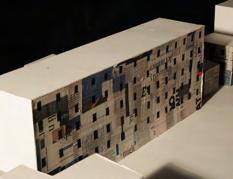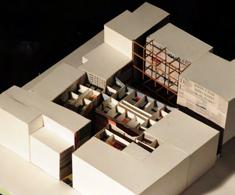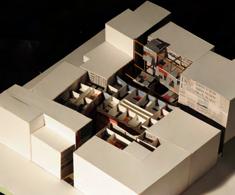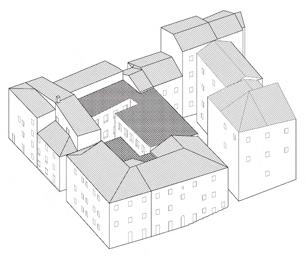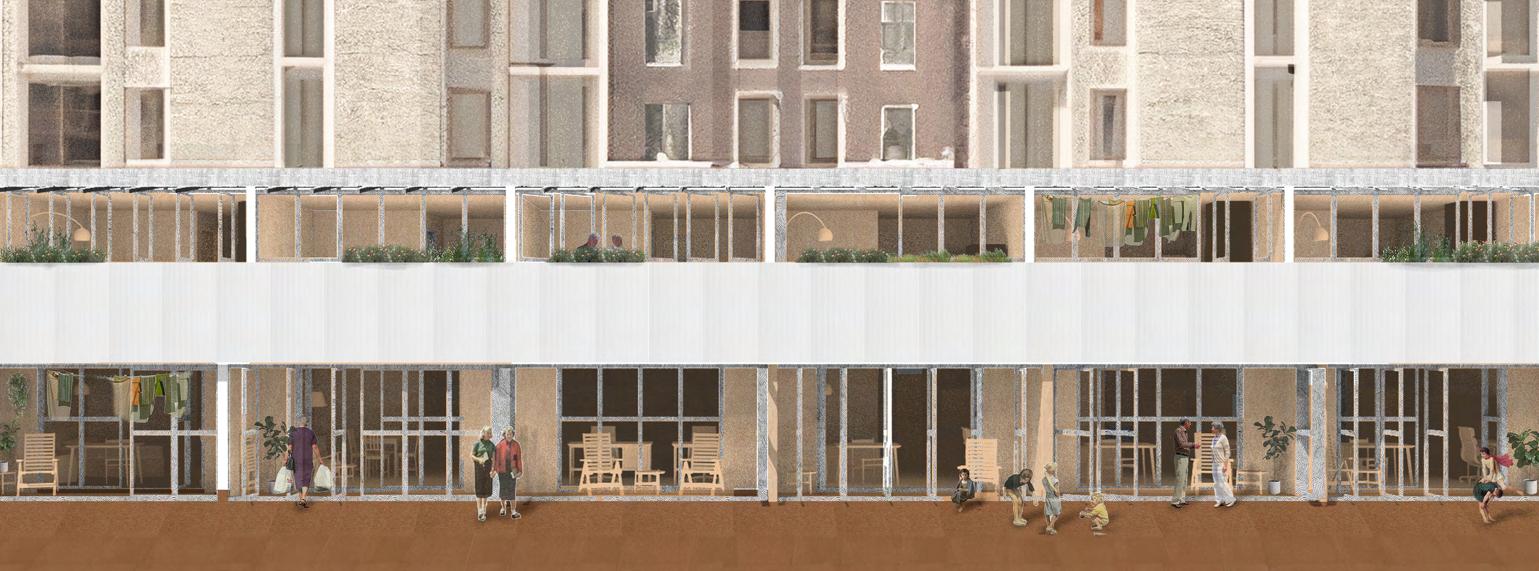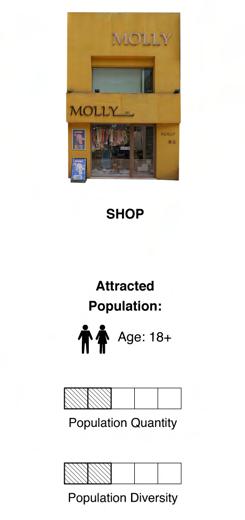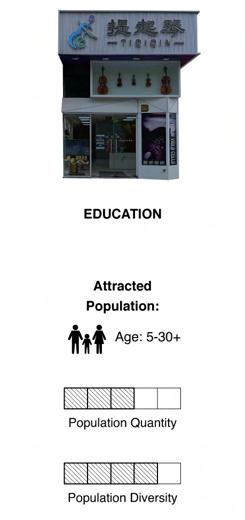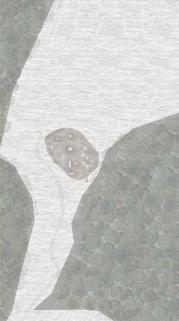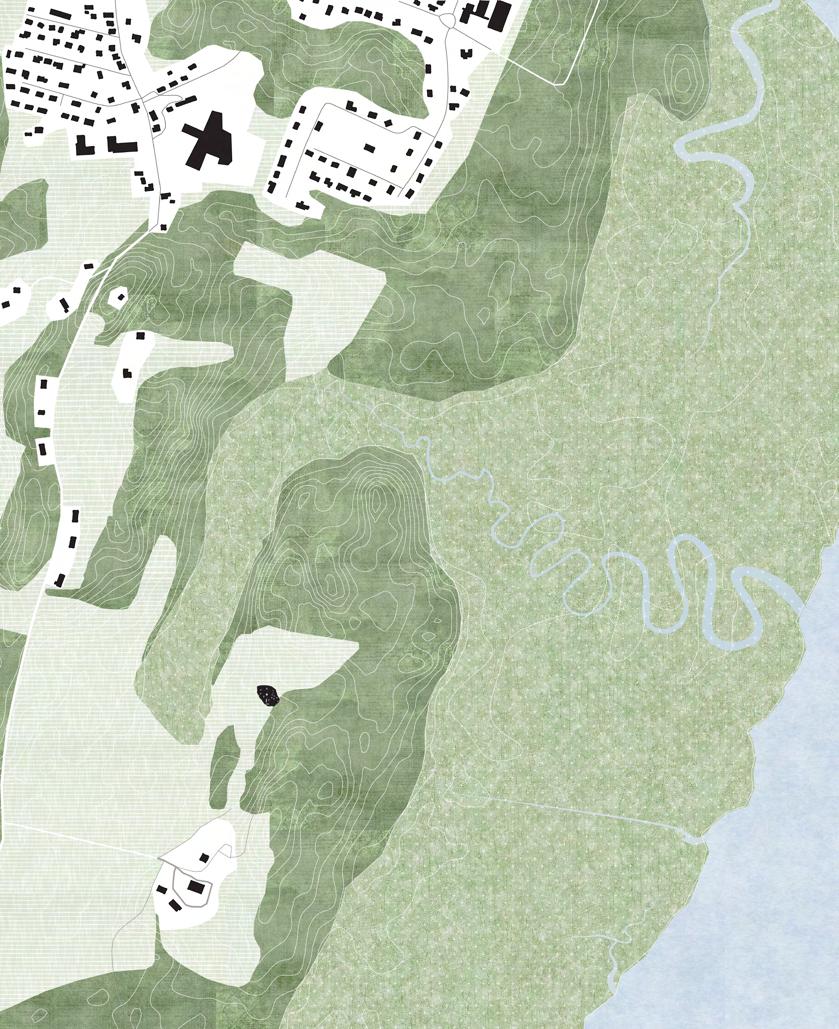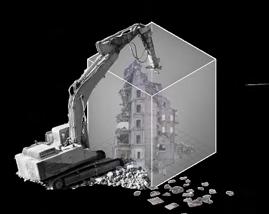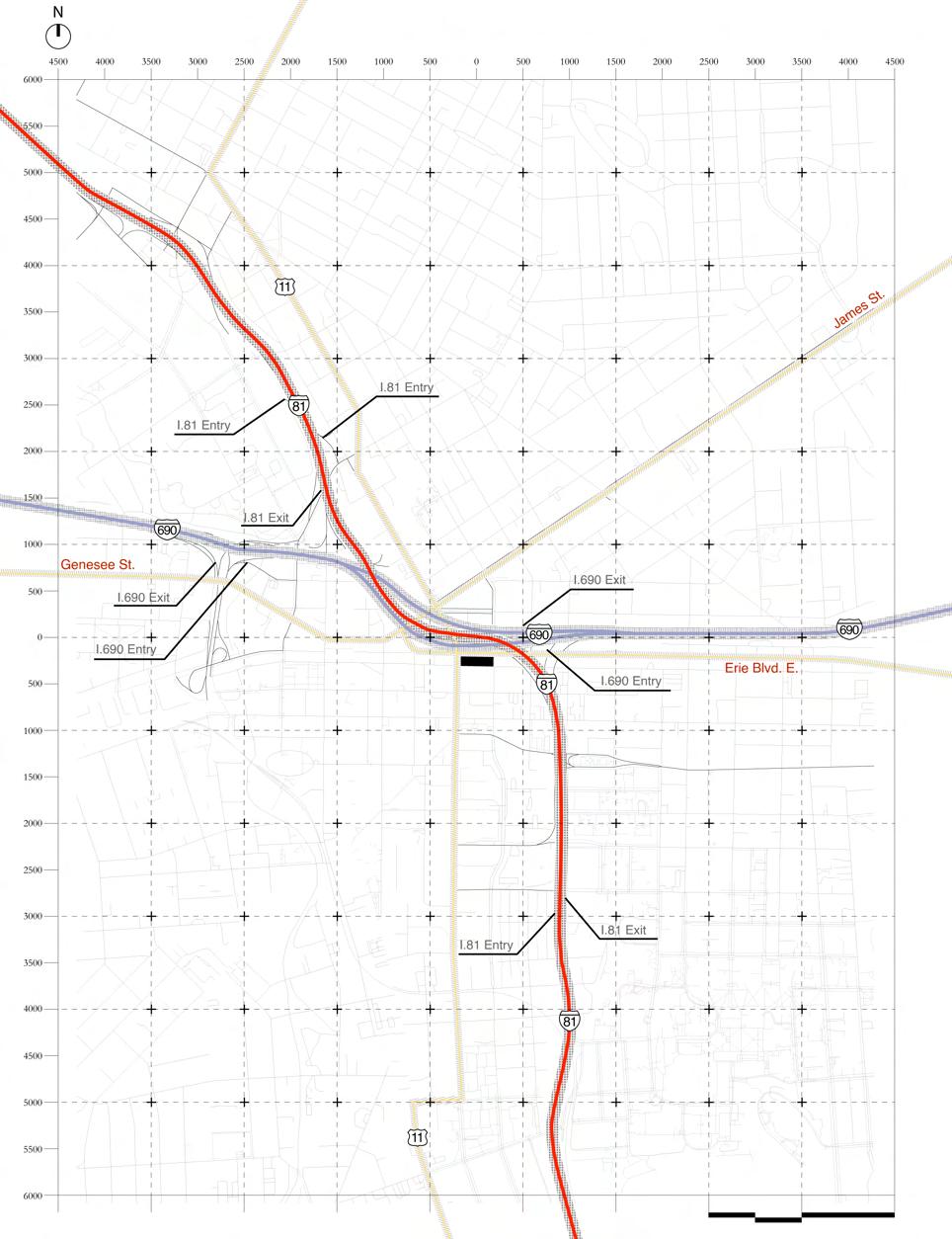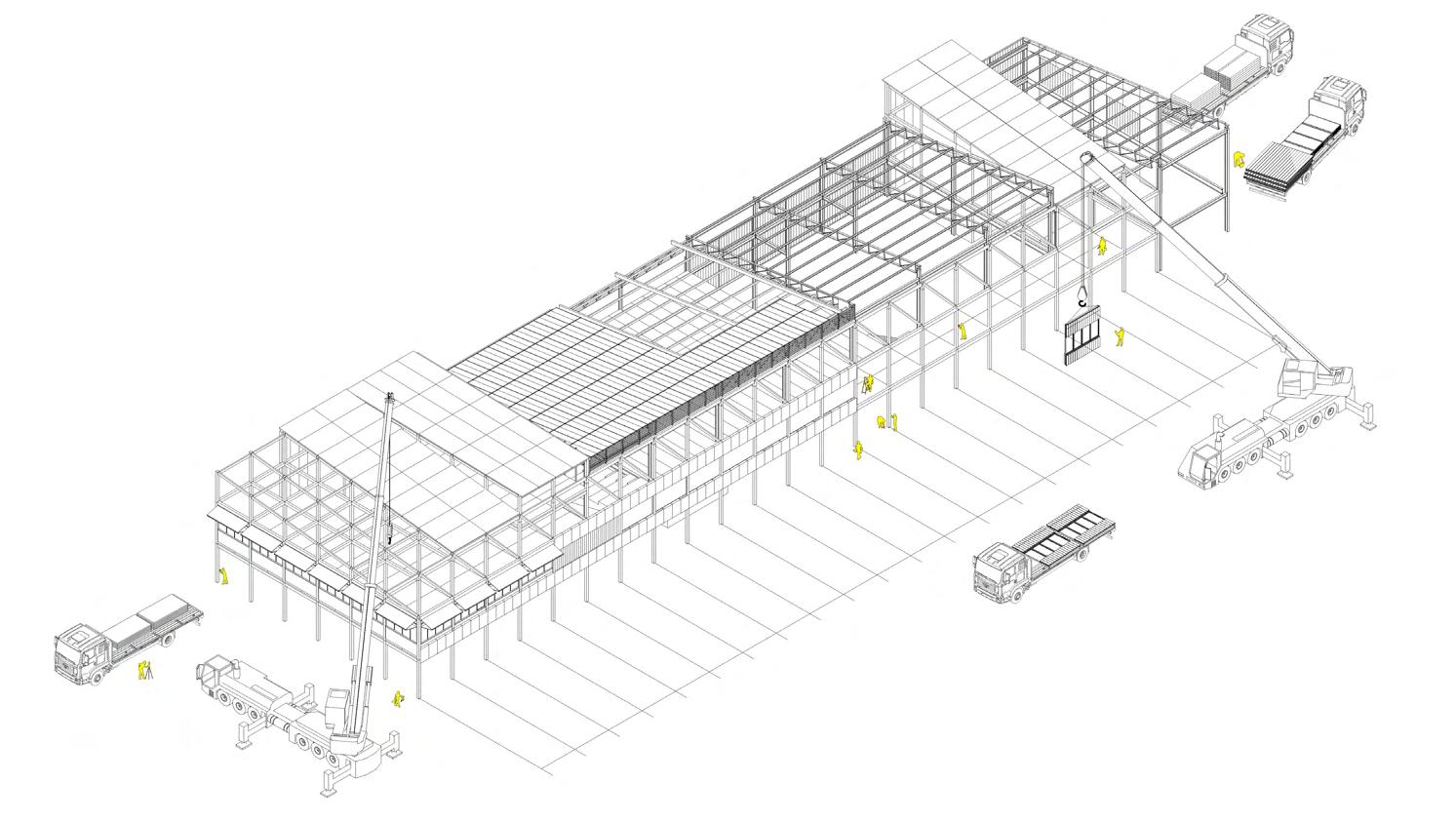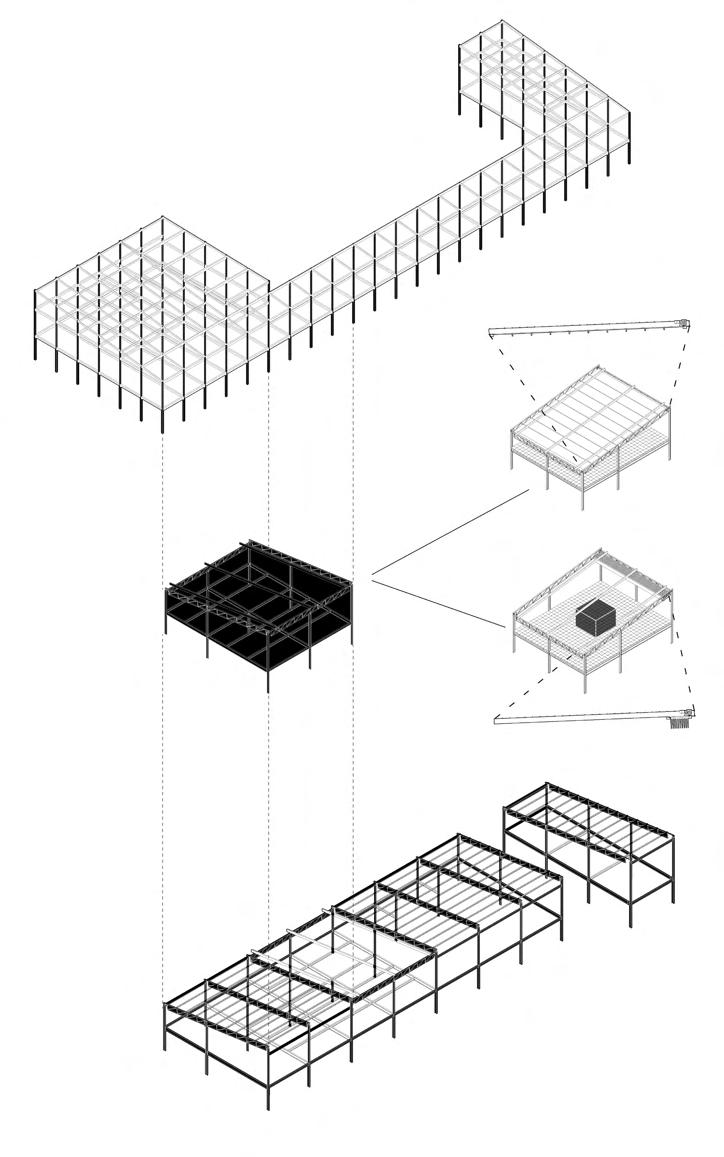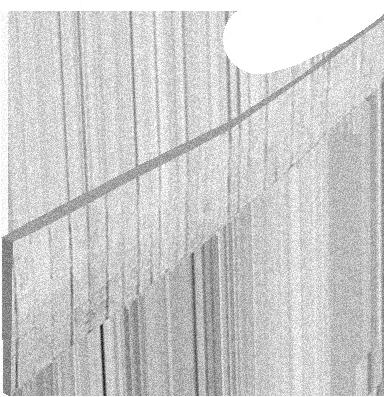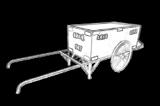Yicheng Wang architecture Portfolio
Architecture is a reflection of society’s aspirations. The selection of projects in this portfolio demonstrates my commitment to illuminate neglected issues. I believe in the power of design in bringing attention to marginalized spaces and people.
Host / Parasite
- an unavoidable compromise
ARC408, Florence Program Design Studio, Fall 2023
Instructor: Luca Ponsi
Site: Rio Marina, Elba Island, Italy
Collaborator: Sansiri Saensopa, Yiting Zhong drawings marked with “***” are produced by collaborator
The island of Elba in the Tuscany region of Italy with its abundant reserve of iron core, was for thousands of years the center of iron export to the Tuscany region and the larger European continent. Moving into the 20th century, Elba’s mining activities gradually declined to the point where the last mining factory was shut down in the early 80s. As mining diminished, tourism blew up. The island’s economy is dependent on tourism, alternating the lives of the locals.
Rio Marina, one of the population centers of Elba, saw a tremendous increase in number of Airbnb and Real Estate for sale in the small town within the past few decades, implying the gradual takeover of tourism in the town though the footprint of the town barely expands. Locals who used to be mining industry workers are either moving away or becoming dependent on tourism to make a living. Taking a binary approach on the relationship between tourists and locals, this project took a crtical or even extreme approach to project on the future of Rio Marina and explore how this entangled relationship between locals and tourists might develop.














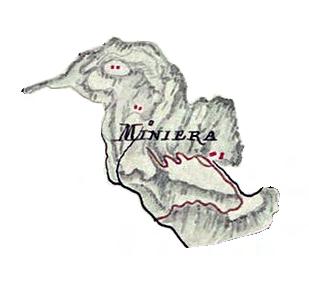












Since the closure of the island’s mining sites, tourism has swept in, reshaping the landscape and bringing waves of transformation. Streets that once echoed with the rhythms of religious and ceremonial gatherings are now lined with souvenir shops. Homes, once deeply rooted in family and heritage, have transformed into Airbnbs, transitory spaces for visitors rather than enduring dwellings for locals. These shifts are more than cosmetic—they are erasing the heart of the island’s cultural identity dismantling a way of life that has long been woven into the fabric of the towns. With each alteration, the traditional spirit fades, replaced by a new image crafted to meet standards of tourism, leaving the island’s essence to slowly disappear, like footprints washed away by the tide.
2007.
2007. 2018. 2018. 2020. 2023. 2023.
1930. 1970. 1980. 2023. 1958. 2020.
1930. 2023.
Clock Tower
On Water Mining Activity (Pre-1981) Tourism
On Land
Construction of Housing
Factory into Chained Grocery Store
The arrival of chain stores like Aqua de Elba and Conad City in Rio Marina marks the beginning of a transformation that could soon accelerate. As these brands take root, they open the doors for further expansion by other commercial chains, gradually replacing local shops and artisans with uniform storefronts that could belong anywhere. With each new chain, the distinctive character of Rio Marina begins to blur. Bit by bit, the individuality of the place fades, leaving behind a landscape of familiar logos and mass-produced aesthetics that erase the town’s identity.
Hy pothesizing on how this situation might progress, locals might end up turning their homes into Airbnb to obtain enough income for their living. At one point, all the original Tuscany characteristics buildings which were the homes of the locals will be turned into Airbnb for the tourists. Throughout time, the locals would gradually move to the back facade of their homes (preserving the aesthetics of the original town) and become the “parasites” of their own properties When there are no other options, this is the compromise that they must make to sustain a
Stage 4: At the final stage, the town of Rio Marina will be ran like a corporation, and each location has its specific function to support the tourists’ needs in the Airbnbs (i.e. laundry, dining, etc.)
Keyword: Corporate
Stage 2: The success of stage 1 households bring locals together in SITE B to structurally plan out the area to save more and earn more across each household.
Keyword: Structured, Programed
Stage 3: The development of stage 2 densify the “dark corners” in Rio Marina, and the lack of space led to transformation of existing building to dwell the locals.
Keyword: Transformation
Stage 1: Locals start to construct in their backyards to try if giving up their homes to the tourists can earn enough to sustain their lives. There are no interaction between household.
Keyword: Sporadic, Unstructured
BRANDS IN RIO MARINA
Phase 1: Original condition. The back facades of appartments are empty.
Phase
Phase 2: Some residents started to construct expansions and move into the backyard space.
Phase
SITE
Phase 1: There are not enough space to build expansions in this site condition.
Phase 1: Open space in Rio Marina is running out and the entire town is starting to run as one entity with different programatic specializations.
Phase 2: Residents reorganize and transform existing buildings facing inward to construct expansions.
Phase 2: Potemkin village facades are built to cover up the inner courtyard from the view of the tourists.
Phase 3: Inward facing buildings are reoccupied by local residents, and outward facing apartments are rearranged to adapt tourists.
Phase 3: This site functions as a laundry center for tourists of Rio Marina. Hiddenly functioning to maintain the image of this Tuscany town.
SITE
SITE
A Day of a Resident Living in the Expansion Space:
I wake up to my alarm, its sound cut through the darkness of my room. The absence of light leaves me disoriented, unsure of the hour until glance at my phone and trust the glowing numbers on the screen. Flicking on the light, I begin to prepare breakfast.
After eating, head to my job at the laundry center. Stepping outside my room, the corridor is also dark. walk down the stairs and approach the exit door. As twist the handle, I brace myself for the flood of sunlight. But no preparation is enough; the brightness overwhelms me, and I stand there, squinting and slightly dizzy, waiting for my eyes to adjust. At work, my day unfolds predictably. move through the apartments of tourists, gathering the dirty bed sheets and towels, then bring them to the laundry center. The task is not hard, just boring. Folding and cleaning, folding and cleaning. The hours drag, and my mind often wanders.
When work finally ends, I return to my small, cramped room wedged between two apartment blocks. Another day has slipped away.
walk outside room walk through corridor walk down the stairs
Crossing the Gulf of Age
Individual Design Project, Summer 2023
Instructor: /
Site: Pudong New District, Shanghai
The aging problem is nonnegligible in our society nowadays. In China especially, the population of 60 years old and beyond is about 280 million in 2023 (20% of total population), and this number will rise to approximately 400 million by 2035 which will be 35% of total population in China. The living condition of senior citizens in China is an essential topic for all. This project chose to focus on a specific region in China - Shanghai - to explore an alternative to accommodate the aging society.
Nowadays, the majority of senior housing in Shanghai can be categorized into two types: senior community and traditional senior home. The former option offers senior citizens the opportunity to live in a gated community containing numerous apartment blocks and an activity center with needed facilities only for the senior residents. The later one usually consists of one building block with a hospital-like setting where senior citizens will live in different types of room and there will be caretakers on each floor to provide assistance. The senior community type all situated in areas far away from city centers where people live, and at the same time, the comfortable living conditions and comprehensive facilities are at the cost of high price. An average room cost per month is more than double of the average retirement pension of retired citizens. On the other side, the traditional senior homes are much more affordable, however, it comes at the cost of poor living conditions, undertrained caretakers, and mental isolation. Regardless of the pros and cons of both types of senior housing, they have a major problem in common, that is creating a community of all senior population isolated from the rest of the society.
The old people I know love sharing their stories with the younger generation; they love watching people come and go; they have mental connections with the neighborhoods they lived in for their entire lives. If they didn’t have to, they would never want to leave. This project aims to create a place that everyone can afford, where the old can comfortably dwell; a place near home, and a place where the lives of the old and the young may interact and co-exsit
Elders Living Area
Elders living in either type of senior housing lack interaction with other people in the community. Their daily routine is simple and repetitive. They wake up, get dressed, and eat their meals, often alone or in quiet company. Hours stretch on as they watch television or engage in a limited selection of activities designed to occupy their time but not necessarily their hearts or minds. The cycle repeats with another meal, another stretch of television, and eventually, bedtime. For many, this predictable rhythm of days feels hollow, a stark contrast to the active, engaged lives they once had


If the existing models for senior housing are insufficient to meet elders’ needs for social connection, an alternative might be for them to live independently or with their children. However, several underlying challenges complicate these arrangements. For elders living independently while they benefit from residing in familiar surroundings, their limited physical abilities often hinder them from performing tasks such as carrying heavy groceries or accessing support quickly during emergencies, which leaves them vulnerable to potential health emergency. On the other hand, when seniors live with their children they are required to adjust their daily routines to align with those of other family members, which may lead to compromises that affect their comfort and independence
An ideal senior housing model, therefore, must address key criteria: preserving a sense of familiarity, ensuring close proximity to essential services, fostering connections with other age groups, and providing reliable safety measures in case of emergencies In modern Chinese residential complexes, these needs are often met through the inclusion of commercial stores situated at the entrances of gated communities, which offer convenient access to daily necessities, support social interactions across generations, and help maintain a safe, connected environment.
FAMILIARITY
However, converting all commercial storefront spaces into residential areas for seniors is not a practical solution, as certain essential services within these spaces serve the broader community. An analysis of the current storefront offerings reveals that programs such as restaurants, gyms, grocery stores, and educational facilities are vital for residents of all ages. These amenities not only fulfill essential needs but also play a critical role in fostering interaction between seniors and other age groups, creating a more socially integrated community. By maintaining these programs within proximity to senior housing, the environment encourages intergenerational connections while also providing seniors with easy access to necessary services.










Living space is an important aspect of all human lives, and for senior people it is especially important to have a space that is accessible and comfortable to live in as they deal with more physical struggles than other age groups. The residential sector can be separated into three parts: balcony, living space, and corridor, in which the balcony connects to the outside and the corridor connects the inner units. The structure and main components of the architecture are shown on the diagram. With the balcony space connected to the pedestrian street, it provides a buffer zone for the living space of residents Opening the revolving folding doors, elders can sit outside under the shade watching people passing by. Closing the folding doors, they will have a private space of their own away from the noise of the street.
For the living space, seniors will have the opportunity to choose from two types of rooms: a single studio room with one bed (300 sqft) or a double 1b1b room with two beds (600 sqft) accommodating their individual situation and preference. Although the unit is nothing luxry and spacious, it is efficient, cozy and accessible with furniture accommodating the needs of elders. The individual units provide the elders the ground to build their own new homes within their familiar community.










Apart from residential space, there are programs such as restaurant, gym, supermarket, multipurpose room and common resting area next to the residential sector to support the daily needs of elders and the residence of the surrounding neighborhood. Through these spaces, the elders can encounter people in society whether they are their friends, family, or just strangers. Without leaving the complex, elders are able to interact with all kinds of people dining in the restaurant, shopping in the supermarket, working out in the gym or just passing by the street.
In the current situation in which the elders are living in isolated senior communities or live isolated in a community with little contact with the outside world, it is very difficult for them to share their wisdom and express themselves. In the public spaces of this complex, the elders will have the opportunity to teach and giveback to the neighborhood because they are constantly interacting with the community, with various people. This is a place where age is not a barrier but bridges connecting people and their experiences. It is the elders’ home where they no longer feel isolated and lonely.
Time to Past - Cemetery
ARC208 Design Studio, Spring 2022
Instructor: Ayesha Ghosh
Site: Catskill, New York State
Project
Death is not the end of life, forgetting is the end of life. Cemetery is people’s yearning for the deceased to stay with us, and it should not be a space filled with sadness. The project proposes a new way to approach the relationship between living and dead; creating a container that can adapt forgetting, and adapt the ground it dwells in. This project proposes a new collective that fabricates and maintains a landscape for memory where the deceased are earthen columns that fade into the landscape over time.
The architecture, container of the creation of the earthen columns reflects the same idea. Maybe after some years, this place no longer serve its current functions; however, at that time I believe the architecture will have more definitions, given by nature and by the people who finds it.
In the relentless flow of time, all artificial creations are destined to fade Tombstones, once markers of remembrance, weather and crumble in the quiet absence of care. In this decay, they speak of oblivion—a silent testament to how memory, too, is worn thin by the years. And as we stand and look down, we see that nature, ever persistent, is in its own eternal cycle of death and reborn This rhythm is part of the human journey as well, reminding us that we, too, are but fleeting visitors in this endless dance of becoming and
The Inevitable Flow of Time: Artifacts
Tombstone crumbles over time
Memorial Flowers withered over time
Life Cycle of Nature
Structure of Column
Plant Soil
wood mould
wood obtain from dead trees
Columns Structure Faded Into Nature (50+ years)
Seeds of Flower Began to Grow on Ground (5+ years)
Blossom of Flowers in Columns (1-5 years)
Columns planted on Ground (0 year)
Building structure, like the earthern columns gradually dissolves into the ground during the flow of time. Nothing is permanent. All passing by within a blink of an eye.
(0-year)
(10-year)
(100-year)
Rethink Deconstruction
ARC409 Design Studio, Spring 2024
Instructor: Brian Lonsway
Site: Syracuse, NY
Collaborator: Jiwei Wang
In today’s rapidly changing world, where the pace of society accelerates daily, architecture struggles to keep up with the changing demands. The slow construction process often means that buildings quickly become outdated. Within a decade or less, many projects face the need for renovations as original occupants move out and new ones require spaces to be adapted to their needs. This misalignment not only wastes time and resources but also results in unnecessary material waste. This project interrogates the limitations of conventional ways of construction and deconstruction by exploring the principles of disassemblability. Positioned as a research center, the project serves as both a functional prototype and a symbolic critique, advocating for adaptive, resource-conscious architectural solutions that can better respond to the fast-changing demands of modern society.


The concept of disassembly in architecture is far from a modern invention Historical examples reveal a long-standing awareness of resource scarcity and the value of adaptability in construction. In ancient Greece, columns were often assembled from multiple segments—shaft drums stacked with a base and capital—allowing for easier transport, assembly, and potential reuse. This approach is evident in many ancient structures, such as the Temple of Olympian Zeus.
The practice of spolia where architectural elements like columns and stones were salvaged from ruined buildings and repurposed, reflects an enduring resourcefulness. This practice transcended both advancements in architectural techniques and shifts in religious and cultural ideologies, persisting well into the medieval period. However, with the rise of modernity and the dominance of reinforced concrete, this tradition of reuse and disassembly was largely abandoned, overshadowed by new materials and construction methods that prioritized permanence over adaptability.
Temple of Olympian Zeus, Athens, Greece
561–527 B.C.
Santa Sabina, Rome, Italy
422-432 A.D.
Great Mosque of Cordoba, Spain Deterioration of Concrete Column
The site is located in the heart of Syracuse at the intersection of I-81 and I-690, making it highly accessible for material transportation. Its prominent position also provides an ideal platform to showcase the principles of disassemblability




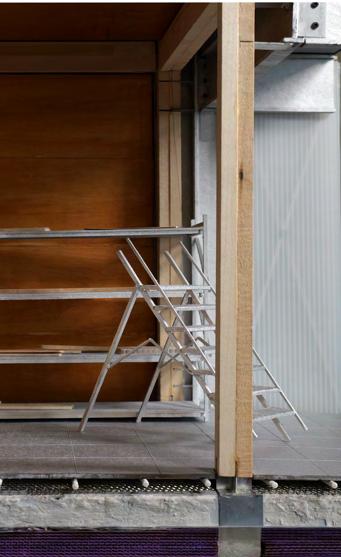


From the outset of the design process, we focused on integrating the principles of disassemblability into both the concept and execution of the structure. We aim to emphasize the relationship between these two aspects and explore how they can exist independently and collectively. Structurally, the project is divided into two interdependent systems: the conceptual framework, represented by cross-laminated timber (CLT), and the executional framework, embodied by steel. The CLT structure symbolizes human ingenuity and the conceptual aspect of design while the steel structure represents material transportation and processing These two systems are designed to be adjacent yet interlocking, creating a physical and symbolic dialogue that underscores their complementary roles in the creation of a disassemblable architecture.
1/4” Chunk Model
PRODUCTION
MATERIAL ARRIVAL
A Connection
ARC307 Design Studio, Fall 2022
Instructor: Joel Kerner
Site: Bogota, Columbia
Individual Project
This project draws inspiration from Gabriel García Márquez’s One Hundred Years of Solitude, a novel that profoundly captures the personality and struggles of the Colombian people. Bogotá, the nation’s capital, has borne witness to centuries of turmoil—from colonialism and the Thousand Days’ War to the rise and fall of drug cartels. Often portrayed as a symbol of chaos and crime, the city’s history reflects the deep scars left by these upheavals. Its people, shaped by a troubled past and an uncertain present, have long been overshadowed and marginalized, with limited means of self-expression.
Today, as Bogotá seeks to redefine itself and shed its dark past, efforts to create a modern, appealing image have often come at a cost: the displacement of homeless communities and street vendors. This project, located above a major transportation artery in Bogotá, serves more than a connection between two sides of the city. It moreover serves as a platform to unite individuals from diverse backgrounds, fostering dialogue and understanding among people who share a common history and a collective vision for the future.
“They came first for the communists, and I didn’t speak up because wasn’t a communist. Then they came for the Jews and I didn’t speak up because wasn’t a Jew... Then they came for me, and by that time no one was left to speak up.” The poem by Martin Niemoller warns people that inaction towards others ultimately isolates oneself
In a society, everyone is inherently connected and entangled. These strings symbolize the relationships and shared responsibilities that weave individuals into a collective whole. However, this interconnectedness is dual in nature. While it fosters unity and shared identity, it can also act as a constraint, with the potential to entangle or even strangle. This tension is embodied in the model: blocks represent individuals, and strings are the complex relationships. When one block is pushed or pulled, the movement creates a chain reaction, influencing the others.




This model seeks to capture a poignant scene from the novel One Hundred Years of Solitude that deeply resonated with Bogota’s present and past. A cemetery that once held the memory and heritage of the town is buried under a layer of concrete to make way for constructions of the banana company This act of erasure reflects the fragility of cultural and historical legacies and how easily they can be destroyed in the pursuit of progress.
The model, divided into three layers, each symbolizing a stage in history: The first layer, earth, represents the nature in which all civilizations built on. The second, wood, embodies historical heritage created and cherished by generations but vulnerable to destruction. The third, concrete, signifies the urbanization, where rapid development often replace and erase the past The past is gradually buried beneath the relentless advance of the present.
Relationship - research model
Earth, Wood, Concrete - research model
The M-19
Kidnapping and Assassination
Bogotá’s recent history of violence stands in stark contrast to its current appearance, which emphasizes green and sustainable living The city created a network of parks, and on Sundays, many major roads are closed to private vehicles, creating space for cyclists in a celebration of community and environmental consciousness. These initiatives reflect a deliberate effort by city officials to distance Bogotá from its chaotic past, marked by murder and violence.
However, a closer look reveals an underlying tension beneath this orderly facade. The streets, though clean and polished, lack the organic vibrancy that sets Bogotá apart from other major cities. Parks, celebrated as symbols of urban renewal, are enclosed by tall gates and operate within restricted hours, emphasizing control over openness. These details suggest a carefully curated and tightly regulated image, where the focus on orderliness may obscure deeper issues. This controlled presentation raises questions about the cost of creating a “new” Bogotá and what might be lost in the pursuit of an idealized, sanitized vision of the city.
M-19 signed Peace Agreement and becomes a legal political party
(Movimiento 19 de Abril) guerrilla movement forms
Pablo Escobar is elected as an alternate congressman in the Colombian Congress
Vendors Homeless
Rodrigo Lara Bonilla, Colombia’s Minister of Justice, exposes Escobar’s drug trafficking activities
Assassination of Rodrigo Lara Bonilla by Medellín Cartel hitmen
Palace of Justice Siege by M-19. Over 100 people, including nearly half of Colombia’s Supreme Court justices, die in the attack.
Assassination of Guillermo Cano Isaza, editor of El Espectador, an outspoken critic of the cartels
of Carlos Mauro Hoyos, Colombia’s attorney general, by cartel operatives
Assassination of José Antequera, a Patriotic Union leader, by cartellinked hitmen
Assassination of Luis Carlos Galán, the presidential candidate by Medellín Cartel hitmen at a rally
Assassination of Bernardo Jaramillo Ossa, another Patriotic Union leader by the cartel
Death of Pablo Escobar: After a nationwide manhunt, Colombian forces killed Escobar in Medellín, ending the Medellín Cartel’s reign



The site’s prominent location inherently grants the project significant visibility and exposure making it a powerful platform for public engagement. Utilizing this exposure, the project serves both as a seamless public passageway across the multi-lane traffic and a private residential space for lowincome individuals often excluded from Bogotá’s urban development. The public space reintroduces the vibrant activity of street vendors, providing a platform for livelihoods that have been marginalized by the city’s pursuit of orderliness. This coexistence of public and private functions fosters a sense of connection between residents and passers, creating a space where daily life and work intersect. Unlike the other parks in Bogota, this is a public sace that cannot be controlled with gates and operation hours. The pathway itself to the residents’ homes and to the other side of the street is the public space, is the park. Through this programmatic organization, the project demands attention to the social and economic challenges often overshadowed by the city’s transformation. It becomes both a critique of and a response to the neglect of marginalized populations, shining a spotlight on the realities hidden beneath












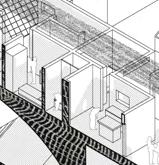
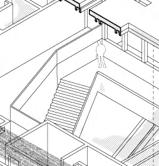







2. This section serves as a transition between the public and private areas. At its core is an atrium, guiding the primary flow of pedestrians down steps to cross to the other side of the traffic.
4. This private section of the building serves as the entrance and exit for residents, providing access to the private circulation route for commuting between both sides of the traffic.
1. This section of the building is entirely public. Vendors are able to sell along the sides of the pathway for passersby to explore. The central green area provides a space for people to sit and rest.
3. This section is private, housing residential units on the side of the main pathway. A smaller central atrium connect to the path allows residents to access the public areas below.
Taobao Village: Salvation or Destruction
Thesis, Fall 2024
Instructor: Jiong (Abingo) Wu
Site: Dongfeng Village, Jiangsu Province, China
Collaborator: Ching-Hsing Chan
This research stems from the concern towards the persistent rural-urban divide in China that causes numerous social issues such as population lost, left-behind children and elders lacking necessary care. In recent two decades, various efforts have emerged attempting to revitalize rural areas and improve the lives of the residents. The rise of e-commerce in the 2000s, particularly through the Taobao platform, transformed some rural areas into “Taobao Villages,” where residents earn income by producing and selling goods online. This research documents and analyzes the transformation of Dongfeng Village in Jiangsu Province into a “Taobao Village,” exploring how e-commerce has redefined its social, economic, and spatial dynamics. Based on a preliminary field study and literature review, the research focuses on Taobao Street-facing houses and newly constructed single-family homes that have replaced traditional dwellings and farmland. These typologies integrate living and production spaces to improve efficiency, reflecting the demands of e-commerce. While e-commerce has brought economic opportunities and reduced the rural-urban income gap, challenges such as product homogeneity, unhealthy competition, and drastic change of the built environment raising concerns about the model’s sustainability. Through interviews, and spatial documentation, this project aims to understand individual adaptations to the efficiencydriven model and understand the forces behind the changes in the built environment of Dongfeng Village.

Dongfeng Village, Jiangsu (SITE)
In the modern narrative of China, images of sprawling urban centers, technological advancements, and economic prosperity dominate the global imagination. Yet, this portrayal obscures a stark reality: nearly half of China’s population lives in rural areas, many enduring conditions that starkly contrast with the gleaming metropolises. In the majority rural parts of the country, the economic development is extremely limited. The way to sustain a living is limited to farming. However, the land that majority of family “own” is not enough to sustain the living for the household of three generations (on average, each household have access to 0.5 acre of land to grow crops). These communities face persistent challenges, including environmental degradation, identity crises among residents, inadequate education for “left-behind” children, and a lack of support for elders. These issues collectively hinder rural development and exacerbate socio-economic disparities.
OPPORTUNITY
The economic reforms of the 1980s drew significant investment into urban areas, leading to a mass migration of the rural workforce to cities and leaving behind children and the elderly in rural regions. China’s urban economic miracle was built on the labor of millions and millions of rural migrant workers. They were the ones who built the skyscrapers and infrastructure that the cities function upon. However, they can barely sustain a living and not to mention move to the cities along with their families. Low wages and the constraints of the household registration system (hukou) severely limit their access to education and healthcare for themselves and their families. In recent years, as the urban development slow down, it is increasingly difficult for migrant workers to maintain a spot in cities. Many have no other way out but to return to their rural communities, sparking the recent policies aimed at “rural revitalization.” However, these policies bring new challenges to rural environment and its residents.
EDUCATION
HOUSING
UNACCEPTED
Children of rural migrant workers often grow up without their parents. These children face high dropout rates, leaving school before or shortly after completing high school due to financial constraints or a disbelief in education. Consequently, many follow their parents’ footsteps, taking on low-wage jobs in urban areas.
Working-age adults often leave their rural homes, along with their elderly parents and young children, to seek employment in urban areas. This migration is driven by necessity, as rural areas offer limited job opportunities with wages that are insufficient to sustain a basic standard of living. Consequently, these adults are largely absent from rural life typically returning home only during national holidays.
Elderly individuals in rural areas often assume the dual responsibilities of caregiving for left-behind children and performing physically demanding farm work. This leaves them without the necessary support or the opportunity to enjoy a peaceful retirement. Rural farmers typically lack access to formal retirement systems or pensions.
Working as a deliveryman in China is an extremely physically demanding job, requiring individuals to complete multiple deliveries consecutively to earn a reasonable income. Delivery platforms like Meituan enforce strict regulations on employees, where even a single consumer complaint can result in the loss of an entire day’s wages.
Many rural migrants in China find employment as street cleaners in urban areas. Unlike the West, they are often not provided with advanced cleaning vehicles or equipment, making their work highly laborintensive and constanly exposed to harsh weather conditions.
Construction work was once one of the most demanding occupations for rural migrants. However, with the slowing pace of urban development in China, the demand for construction workers has significantly decreased leaving many without stable income.
China’s household registration system, known as the hukou, categorizes citizens as either rural or urban residents based on their place of birth. This system ties access to education, healthcare, and housing. Rural migrants who move to cities for work often cannot transfer their hukou to urban areas, which restricts their access to essential public services As a result, they face significant barriers to settling permanently in cities.
TRANSPORTATION
to grocery, hospital, park
TERRAIN
PRACTICALITY DELIVERY
with people not only of their same ages cheap, stable and functional free and same-day delivery
The rise of e-commerce in the 2000s, particularly through the Taobao platform (the Chinese version of Amazon), transformed some rural areas into “Taobao Villages,” where residents earn income by producing and selling goods online This research focuses on Dongfeng Village in Jiangsu Province, a typical Taobao Village in areas close to the Yangtze River Delta. In Dongfeng Village, residents specialize in producing and selling wooden furniture on online platforms such as Taobao. The village’s proximity to national transportation expressways, such as the G2 Beijing-Shanghai Expressway, enables rapid distribution of products to consumers across the country. Additionally, its flat terrain provided an advantage, facilitating its rapid e-commerce-driven development in the 2010s.
As wealth started flowing into this rural terrain, more villagers previously worked in urban areas returned home to open online shops and produce furniture in their backyards. This shift significantly alleviated the problem of left-behind children and the elderly, which many rural areas in China face. It seems that “Taobaolization” offers a way to address the severe rural-urban divide in China, however, after a decade of growth, Dongfeng Village is facing challenges, including product homogenization, unorganized development, and intensified competition. Moreover, in response to the evolving demands of the e-commerce model, the government permitted significant modifications to the built environment to enhance efficiency. Two large package distribution centers were built despite the village’s population of just 4,782.
Lianyungang–Khorgos Expressway
- Lianyungang: 4.2 million population
- Urumqi: 4.0 million population
- Population: 4782 / 1180 household
- Area: 6 km²
- Distance to Major Cities:
- Shanghai: 6h17min (500km)
- Beijing: 8h8min (780km)
- Xi’an: 9h28min (925km)
- Wuhan: 6h69min (672km)
- Hangzhou: 5h44min (523km)
- Guangzhou: 16h7min (1542km)
Dongfeng Village, Jiangsu Province
Taobao: Wood Furniture from Jiangsu
ENVIRONMENT
IDENTITY
From 2006 to 2022, Dongfeng Village went through significant transformations in its built environment. Large areas of farmland were repurposed for the construction of factories, distribution centers, and commercial apartment blocks Many traditional houses were demolished to make space for new housing typologies designed to accommodate the production and distribution demands of the e-commerce model (i.e. Taobao Street Facing House). Additionally, roads were widened and paved to enhance transportation efficiency The pace of development in Dongfeng Village resonated the rapid urbanization seen in cities of China, with numerous decisions made hastily to capitalize on the economic opportunities brought by e-commerce, often without fully considering the long-term consequences.
As the initial wave of e-commerce-driven growth has subsided, the village is left with the impacts of its rapid development. The situation was further exacerbated after the COVID-19 pandemic, as China’s economy experienced a downturn that significantly affected online businesses. This decline has sparked widespread questioning of the sustainability of the Taobao model as a means of rural revitalization. This research, ongoing until April 2025, aims to examine the long-term effects of e-commercedriven transformation on Dongfeng Village. In January 2025, the research team will return to the village to conduct in-depth spatial documentation and interviews with residents. The objective is to analyze how the rapid development has reshaped their living and working environments and to identify the challenges and issues that have emerged during this process.





































































































